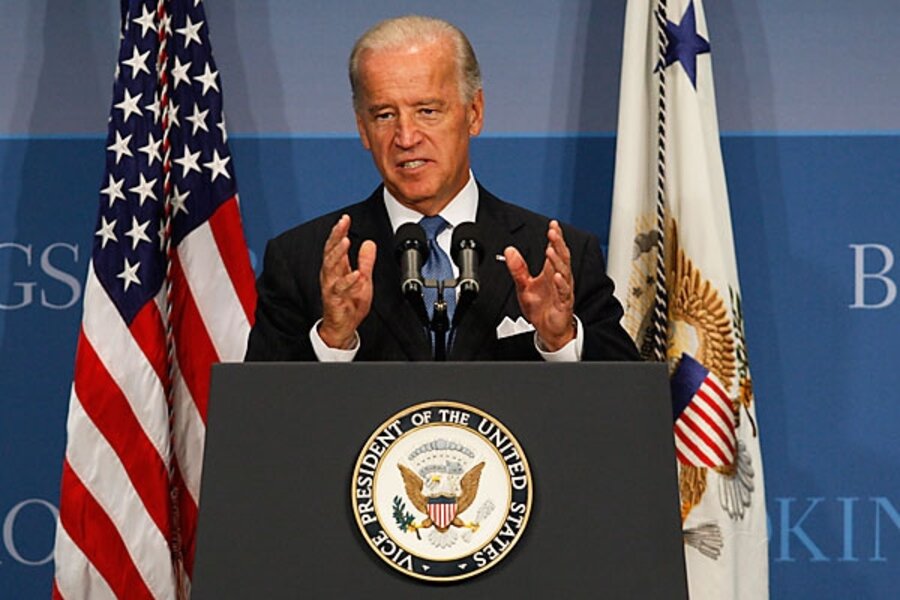White House's new stimulus message: It's helping you
| Chicago
Vice President Joe Biden and five cabinet secretaries went on the stump nationwide Thursday to convince Americans that the $787 billion federal stimulus package is having a significant impact on their everyday lives.
The tone marked a shift for the Obama administration – departing somewhat from broad pronouncements about its effect on the American economy in favor of touting concrete examples in local communities.
• In Louisa, Va., Agriculture Secretary Tom Vilsack announced that a $3.3 million loan is resulting in a new wastewater treatment system in the central Piedmont region of rural Virginia, benefiting 585 residents.
• In Sacramento, Calif., Education Secretary Arne Duncan said stimulus funds either saved or preserved 125,000 jobs across the US that were threatened under state budget cutbacks.
• In Chicago, Transportation Secretary Ray LaHood said $62 million in stimulus money is responsible for resurfacing Interstate 57 in Cole County, Ill., rebuilding the Troy interchange in Madison County, Ill., as well as modernizing Highway 6 south of Chicago. “We need to make our national priorities clear, and then empower state and local jurisdictions and other stakeholders to make them a reality,” Mr. LaHood said.
• In Little Rock, Ark., Secretary of the Interior Ken Salazar announced $132,000 for restoring miles of trails in Hot Springs National Park and $1.27 million for repairing ice and flood damage and trail restoration at Buffalo National River.
“The administration is now trying to make the stimulus real to people rather than abstract,” says John Schmitt of the Center for Economic and Policy Research in Washington. “More than a shift in economics, they’re trying to underscore that this is making a difference, that this isn’t macro economics, this is local sewer system improvement efforts in a specific town.”
The American Recovery and Reinvestment Act, passed in late February, was criticized for arriving too late into the recession and being short the $1 trillion that President Obama initially promised before taking office. Moreover, some critics say the emergency funds have not done enough to stimulate the economy on the local level.
Stimulus money originally meant to support state and local governments was cut short to get it through Congress, which was a “terrible development from a policy perspective,” because it will contribute to rising unemployment into next year, says Mr. Schmitt.
Saturday marks the 200th day after bill’s signing, and at the Brookings Institution in Washington Thursday, Mr. Biden sought to illustrate through hard data exactly how the administration exceeded its original commitment.
The administration is “very wise to [showcase their accomplishments] in a very systematic way as possible” due to the public, political and media scrutiny that comes from the magnitude of such a program, says Stephen Hess, a political analyst at the Brookings Institution.
Shifting from the big picture goals – green jobs and new technologies – to the bill’s nuts-and-bolts accomplishments is a sign that the administration is now paying attention to local needs first.
“You’re not going to ask a mayor or a city commissioner to think grandly about the year 2020,” says Mr. Hess. “He’s going to be thinking about how he meets his payroll and how he’s not going to have to fire any policemen and how he’s going to fix that bridge that’s not in the greatest shape. That comes with the nature of how the money goes out.”
-----
Follow us on Twitter.





